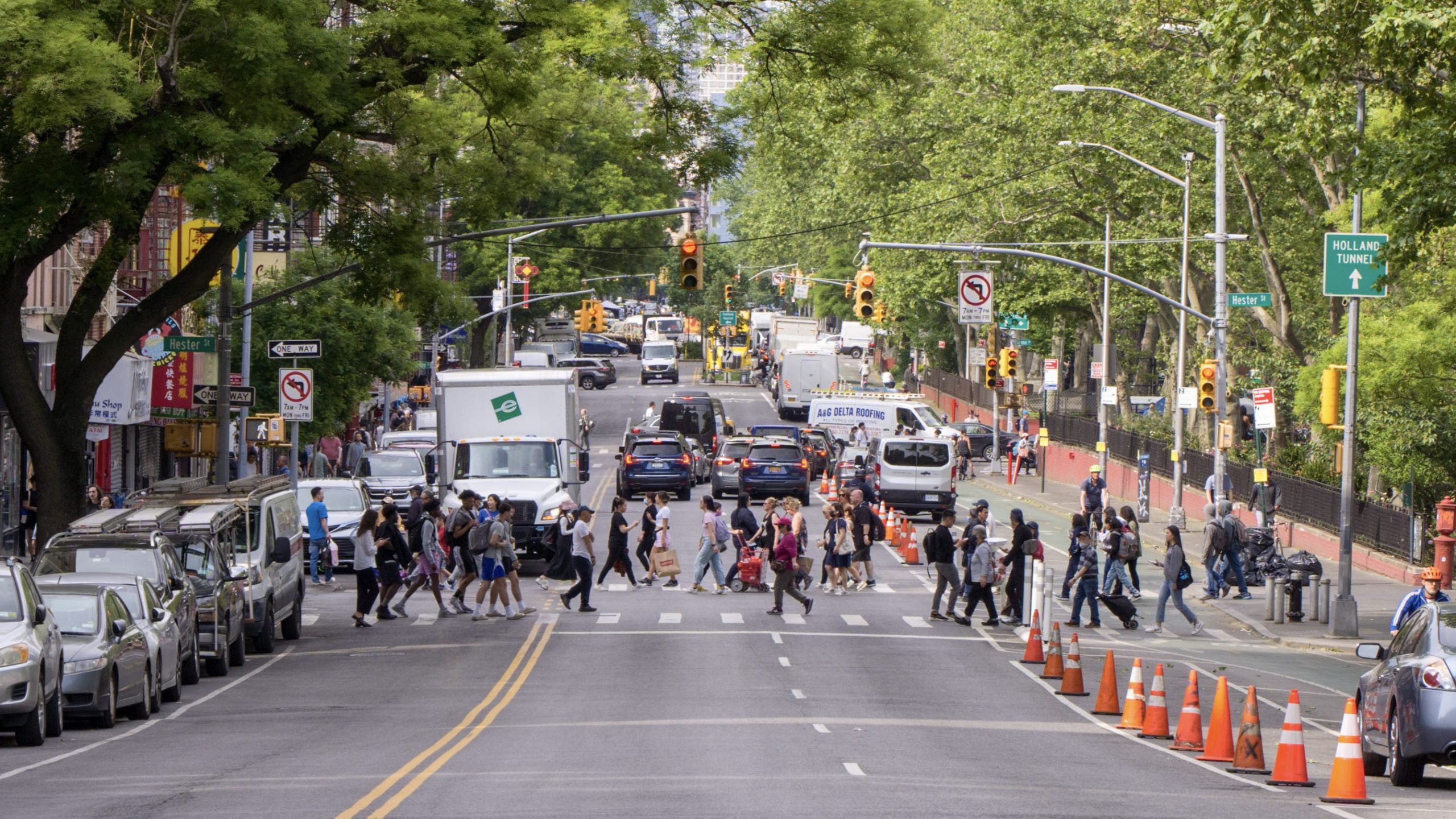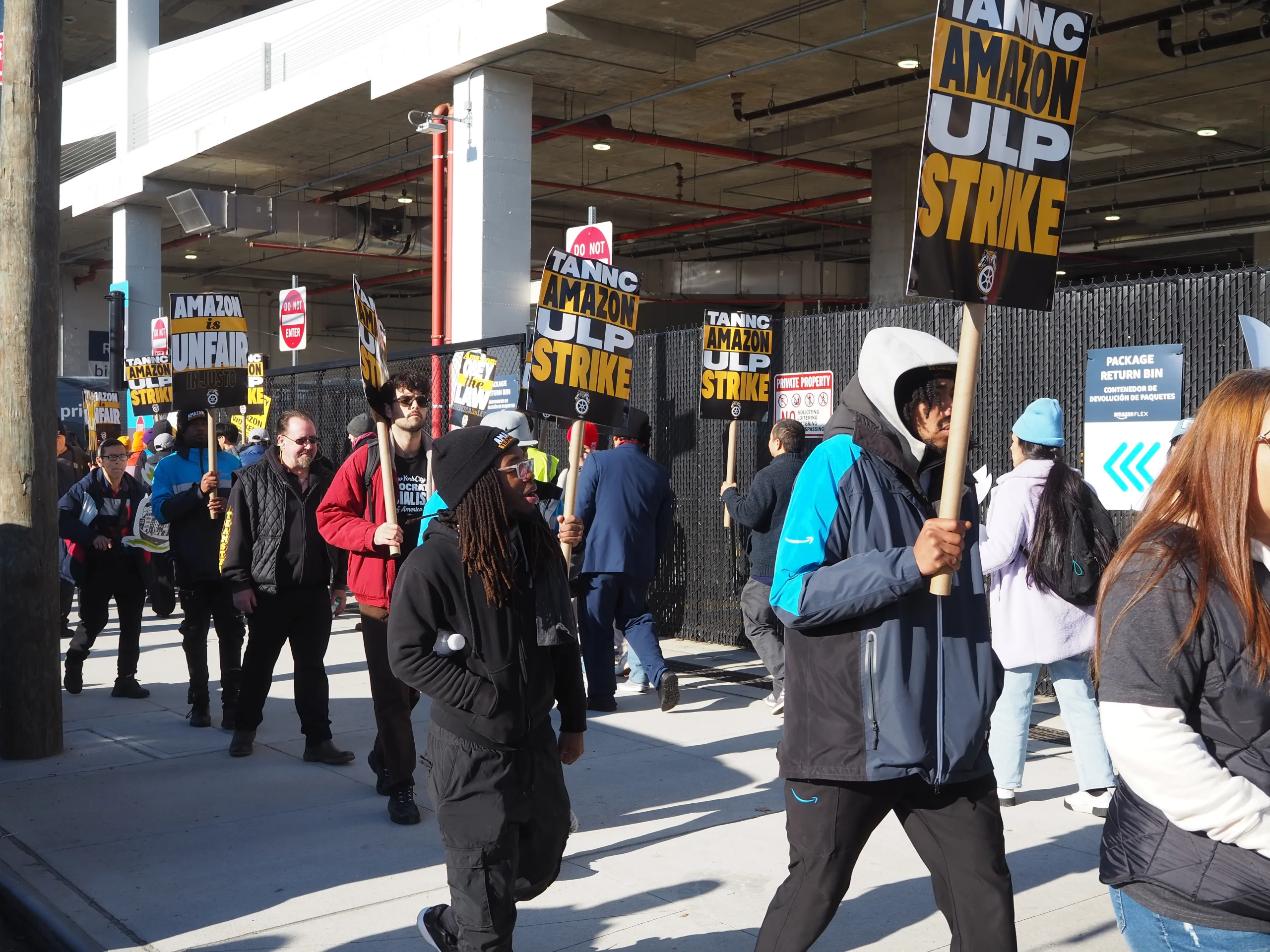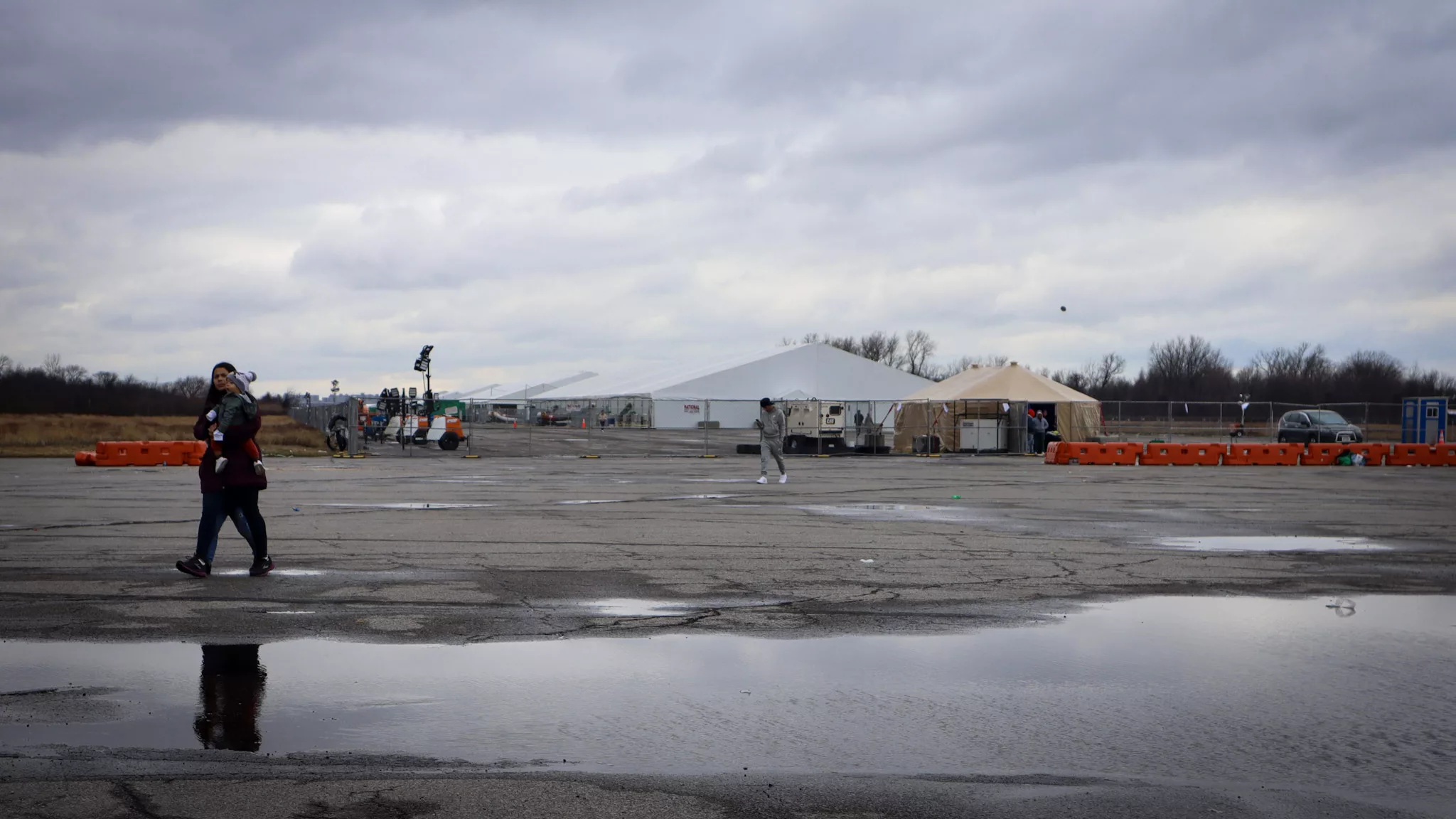中文版阅读:后疫情时代唐人街走向何方?新生代领袖如是说
In Chinatown, change is hard to miss.
On Elizabeth Street in lower Manhattan, a fine dining restaurant is about to open in the former building of Jing Fong, an iconic eatery and once the largest restaurant in Chinatown. Just a short stroll away, passers-by gaze through a fence at the remnants of 70 Mulberry Street, a historic community building that was devastated by a tragic fire at the beginning of the pandemic. Rounding the corner, the rumble of excavators on Baxter Street remind people of the city’s ongoing plan to replace the Rikers Island jail complex with borough-based jails.
In the wake of a grueling three-year battle against the pandemic, including the closure of many long-standing stores and restaurants, Chinatown is in a period of transition. A wave of new businesses and organizations has emerged, answering to the unmet needs and challenges facing the neighborhood. Documented sat down with leaders of three dynamic young organizations witnessing Chinatown’s transformation: Yin Kong, Director of Think!Chinatown; Jan Lee, Co-founder of Neighbors United Below Canal; and Victoria Lee, Co-founder of Welcome to Chinatown. Their perspectives shed light on a potential blueprint for reshaping one of the oldest Chinese communities in the United States.
Survival: Autonomy within the Chinatown Community
Perched before a Chinese square table, Yin Kong savors a sip of herbal tea, bringing solace to the end of a busy day within Think!Chinatown‘s studio at 1 Pike Street. In the backdrop, a photography exhibition on a crimson colored wall features important moments that shaped Chinatown, ranging from the grit of mom-and-pop legacy businesses to the joys of reclaiming public spaces.
During the pandemic, the Manhattan-based intergenerational non-profit founded in 2017, conducted a commercial district needs assessment study with the Chinatown Business Improvement District. The study found that limited community space, high storefront vacancy, and major connectivity barriers are some of the many challenges impeding the growth of Chinatown. Survey respondents also emphasized their desire for more cultural programming and events that can uplift the community, improve the public realm and attract more foot traffic to Chinatown. “I think people really want to have a reason to come back if they’re not routinely here and something to invite them in,” Kong explained.
Along with community partners like Asian Americans for Equality, Think!Chinatown has created and organized several large cultural events that represent the core and pride of Chinatown to infuse vitality and appeal into less popular areas or vacant storefronts. Its seasonal night market event improved its lighting at night, bringing hundreds of visitors to Forsyth Plaza, a site where many locals shop for a variety of affordable produce from street vendors. In the past, inadequate lighting at night throughout the district caused streetscapes to appear unwelcoming or unsafe.
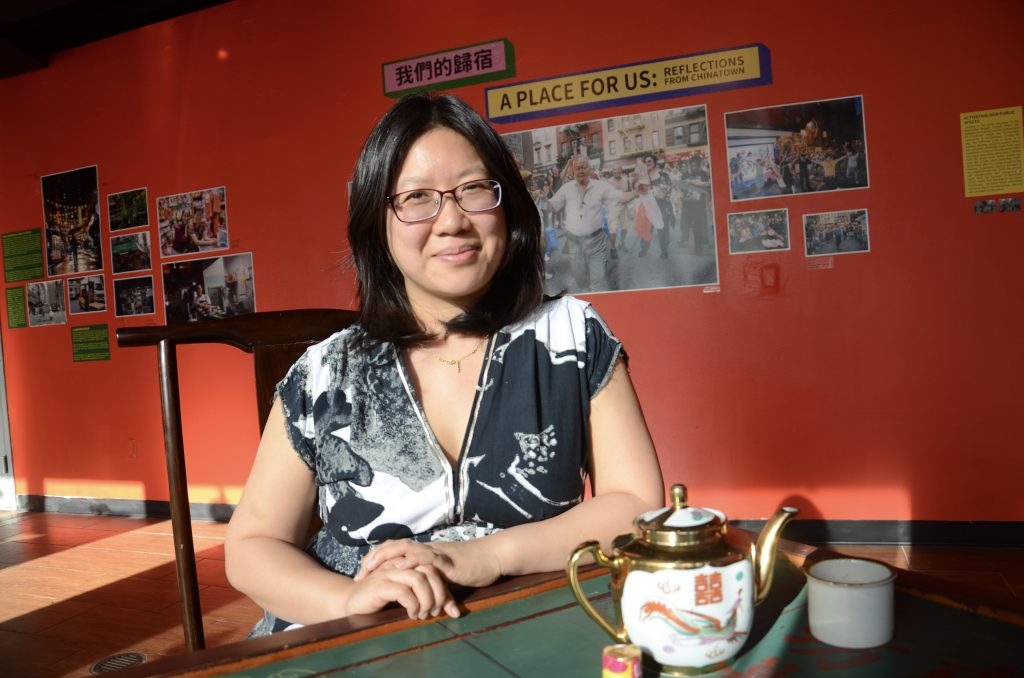
Think!Chinatown’s studio, previously a bustling bar, is also undergoing renovations to become an open art space later this year, Kong says. The studio would accommodate exhibitions, workshops, and Chinese cuisine cooking classes in the years ahead. Moreover, it would serve as a public space dedicated to fostering awareness, education, and advocacy within the community.
“Chinatown did an amazing job of being resilient and recovering fast,” Kong told Documented. “There’s so much attachment and love for this neighborhood.” Besides numerous donations from individuals and organizations that care about Chinatown, she has also observed a remarkable upswing in activist solidarity and the emergence of many community organizations dedicated to protecting and empowering Chinatown during the pandemic.
“I think our generation, we have growing autonomy,” she said, adding that Chinatown’s survival depends on the community’s ability to advocate for equity in resources and effective community engagement.
According to Kong, there has been a significant shift in the dynamics of the Chinese community compared to the early days of Chinese immigration. In the past, the community relied heavily on a few prominent Chinese organizations that represented a dominant voice in community affairs because of language, cultural barriers, and a more exclusive historical context shaped by the Chinese Exclusion Act. However, today’s Chinese community showcases a greater diversity of voices and perspectives. More Chinese Americans now hold positions of influence and are actively working within city agencies to bring about positive change. “I feel very hopeful about that,” said Kong.
In the post-pandemic era, Kong said Chinatown’s biggest challenge is the lack of community space. “I really hope we’re not the only ones generating the event or the exhibit. I want to have more organizations, more artists, more people who deeply care about Chinatown and make things that are for and within Chinatown.”
Struggle: The mega jail and lingering issues
Kong’s viewpoint echoes the concerns expressed by Jan Lee regarding the future of Chinatown. “How can we celebrate [AAPI Heritage Month]? We have no room to celebrate,” Jan Lee told Documented at Silk Road Cafe on Mott Street, mentioning the ongoing borough-based jail plan.
As a third-generation resident deeply connected to the neighborhood, Jan Lee co-founded Neighbors United Below Canal, a community organization against the proposal announced by Mayor de Blasio in 2017 to construct a 350-foot tall borough-based jail within Chinatown. It is part of the city’s efforts to close the notorious Rikers Island jail complex and fix what many say are failed incarceration policies.
Encompassing 55 blocks, Chinatown is one of New York City’s most densely populated communities, accommodating approximately 79,400 individuals per square mile — nearly three times the city average. The scarcity of community space has long been an affliction burdening Chinatown, impacting land and resource utilization, housing affordability, and exacerbating the issue of gentrification.
Founded in 2018, NUBC actively advocates for the preservation and protection of Chinatown’s unique character, and expresses concerns about the construction of the jail. Jan Lee and many Chinatown residents view the proposed new jail plan posing a threat to the neighborhood and that the idea for the jail was a result of insufficient community involvement and transparency in the city’s decision-making process.
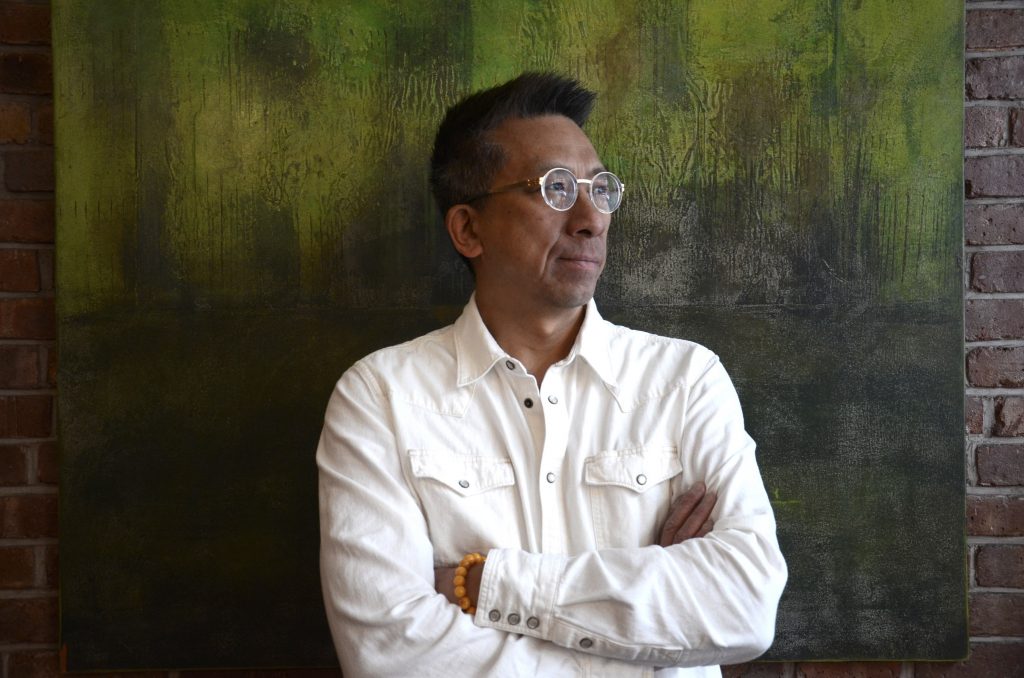
“Mega jail is definitely not in the future of Chinatown for me. I want to do everything I can to stop them from building the mega jail,” said Jan Lee, mentioning that the city halted the demolition of the Manhattan Detention Complex in response to the protest by local residents at the end of this April.
Chinatown is grappling with the lingering effects of past disasters, such as the devastating aftermath of 9/11 and destructive fires, he explained. Revitalizing 70 Mulberry Street and reopening Park Row, the closed vital path connecting lower Manhattan and Chinatown due to 9/11, are more urgent needs for the community, while a new jail is considered the least desirable outcome.
Jan Lee said the preexisting challenges, such as food insecurity and mental health issues in Chinatown, were exacerbated during the pandemic. Moreover, the rise in anti-Asian hate crimes has instilled fear and a sense of insecurity within the community, leading some individuals to neglect their health due to concerns about public safety. According to NUBC and research by NYU Langone, the establishment of the new jail would amplify the existing problems by disturbing local businesses, including street vendors who play a vital role in providing affordable food ingredients to the neighborhood. Additionally, it would potentially pose feasibility risks and have adverse health impacts on seniors, such as increased air and noise pollution.
Jan Lee also expresses deep concerns regarding the decline of Chinatown, a situation not unique to New York and shared by other Chinatowns in Montreal, Toronto, and Vancouver. According to Jan Lee, this phenomenon is not because of a lack of entrepreneurship, knowledge, or business acumen within these communities. Instead, it is a consequence of systemic racism embedded within government systems, resulting in the displacement of of Chinese immigrants in Chinatown.
Meanwhile, Jan Lee pointed out that the local government’s lack of sufficient incentives, including tax abatements, posed a significant obstacle for Chinese and other property owners of color in preserving and safeguarding their properties, calling it “another form of Chinese exclusion.”
Jan Lee recalls the journey of his grandfather, who triumphed over challenges during the era of the Chinese Exclusion Act. Despite facing two rejections as an undocumented immigrant, his grandfather persisted and legally entered the U.S. on his third attempt. Eventually, Jan Lee’s grandfather acquired a property in Manhattan Chinatown. His family tried to maintain and keep the building “as a symbol and a defiance that you’ve overcome the laws against your race of people.”
Amidst the concerns, Jan Lee recognizes a positive aspect: the utilization of social media by the younger generation to raise awareness about the challenges Chinatown faces. He noted that when young people become knowledgeable about specific causes or issues in Chinatown, they can quickly share them on social media platforms and make the issues “reach beyond the wall of Chinatown.”
Sustainability: Preserve and reimagine
With over 46,000 followers on Instagram, Welcome to Chinatown has garnered support from the younger generations, including Gen Z, and has established itself as an online ambassador for Chinatown.
Sitting in the backyard of Round K By Sol, a Korean-style coffee shop in Chinatown, Victoria Lee, one of the organization’s founders, recalled the history of the young organization. As a grassroots initiative established in March 2020, Welcome to Chinatown initially focused on fundraising for Chinatown businesses and boosting their online visibility during the challenging times caused by the Covid-19 pandemic and rising xenophobia. Round K By Sol is among the many businesses that managed to survive the pandemic with the help of Welcome to Chinatown’s Longevity Fund. According to Victoria, the small business relief fund had distributed nearly 80 grants totaling $515,000 heading into 2023.
Victoria Lee, told Documented that the organization has since expanded its initiatives to provide sustained support, aiming to secure long-term economic prosperity for Manhattan’s Chinatown and small businesses.
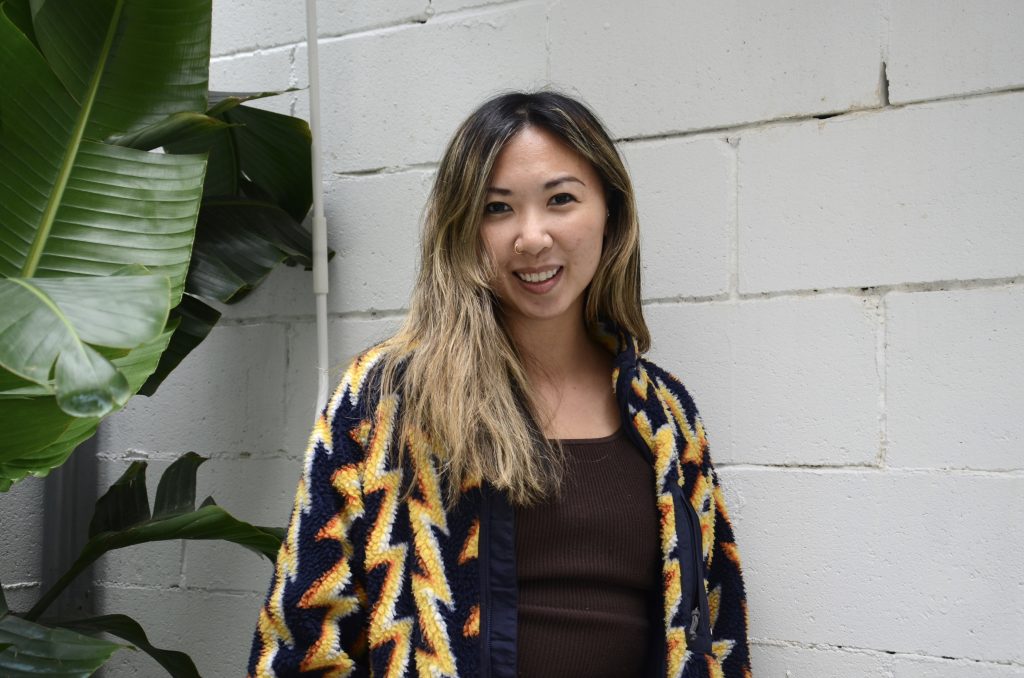
Victoria Lee said Chinatown suffered more than the rest of the city during the pandemic and is still enduring its aftermath. According to the Chinatown Impact Study released by Welcome to Chinatown in 2022, over 15 percent of visitors to Chinatown storefront businesses are lower Manhattan workers. She emphasized that the shifting work culture and the increasing number of individuals opting to work from home would significantly impact the neighborhood, particularly considering the heavy reliance of businesses on nearby office workers. “That has impacted a lot of the business owners,” Victoria explained. “Because they are not only, when we think about Chinatown, thinking about tourists coming from out of state or out of the country, but there is a large dependency on visitation from office workers, particularly those that are in the financial district or the nearby government offices.”
Meanwhile, Chinatown is aging with its population. “Many business owners are aging, and they don’t have a next of kin next generation who either can or wants to take on running the business,” Victoria Lee explained. She highlighted the importance of addressing succession planning in Chinatown and finding ways to balance welcoming new businesses and mitigating the impact of gentrification.
“When I think about the future of Chinatown, it’s important to see more and more generations who are able to experience Chinatown in their own way,” she said, noting that the many young people who opened new stores in Chinatown during the pandemic inspired her. “It’s very much a blend of old and new that they are trying to take. That they’re trying to put their twist on what traditional take on food might be. And I think that that for me has been really fun and energizing to see.” Victoria Lee said.
Currently, Welcome to Chinatown is fundraising to launch a small business innovation hub, which may bring solutions to Chinatown’s challenges. According to Victoria Lee, the hub will create a space where business owners and entrepreneurs can come together, access resources, and feel empowered. The hub also seeks to bring in diverse partners who can contribute to the growth and development of the community through collaboration and innovation.
“We have to accept that Chinatown is going to change,” Victoria Lee said. “So what I hope is that it changes in a way where it really continues to honor the history and the grit and the resilience of all the residents before who have made it.”
